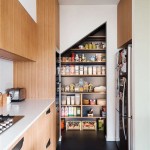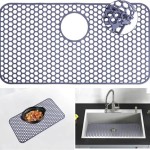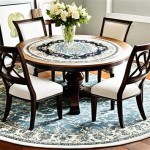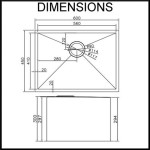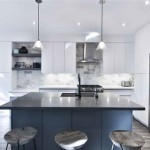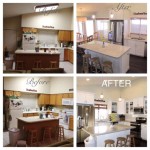Illuminating Your Workspace: Selecting Light Fixtures Above the Kitchen Sink
The kitchen sink is a central hub within any home. It's a space for food preparation, dishwashing, and various other tasks. Adequate lighting is crucial to ensure safety, efficiency, and overall visual comfort in this frequently used area. Choosing the right light fixture above the kitchen sink is therefore an important decision, one that involves careful consideration of various factors, including functionality, aesthetics, and building codes.
A poorly lit sink area can lead to strain on the eyes, making tasks more difficult and potentially hazardous. Insufficient illumination can obscure details when washing dishes, making it harder to spot food particles or potential hazards like sharp objects. Conversely, harsh, unflattering light can be equally problematic, causing glare and contributing to fatigue. The goal is to create a balanced and well-lit environment that promotes comfort and productivity.
The selection process should begin with an assessment of the existing lighting scheme within the kitchen. The new fixture should complement the overall design and contribute to a cohesive and functional lighting plan. Factors such as the size of the sink, the height of the ceiling, and the architectural style of the kitchen all influence the optimal choice.
Understanding the Importance of Task Lighting
Task lighting is specifically designed to provide focused illumination for specific activities. In the context of a kitchen sink, task lighting is essential for illuminating the work surface and making it easier to perform tasks such as washing dishes, preparing food, and cleaning the sink itself. The purpose of the light fixture above the sink is to provide this concentrated illumination, eliminating shadows and ensuring that the area is adequately lit for safe and efficient use.
The intensity of the light required will vary depending on the user's individual needs and preferences. Older individuals may require brighter light levels to compensate for age-related vision changes. The finish and colors of the surrounding surfaces also play a role. Darker surfaces absorb more light, necessitating brighter illumination to achieve the desired effect. Conversely, lighter surfaces reflect more light, potentially reducing the need for such intense illumination.
When considering task lighting for the kitchen sink, it's crucial to avoid glare. Glare occurs when excessive light is reflected from a surface, causing discomfort and reducing visibility. Fixtures with diffusers or reflectors can help to minimize glare and create a more comfortable and functional lighting environment. Dimmers are also a beneficial addition, allowing users to adjust the light intensity to suit their specific needs and preferences.
The CRI or Color Rendering Index is another factor to consider. CRI refers to the ability of a light source to accurately render the colors of objects. A high CRI rating indicates that the light source will accurately display colors, which is important for tasks such as food preparation where visual accuracy is essential. Choosing a light fixture with a high CRI value can enhance the visual appeal of the kitchen and improve the overall user experience.
Types of Light Fixtures Suitable for Over the Sink
Several types of light fixtures are commonly used above kitchen sinks, each offering distinct advantages and disadvantages. The optimal choice will depend on the specific design of the kitchen, the user's individual preferences, and the desired level of illumination.
Recessed lighting is a popular option for modern kitchens. Recessed lights are installed flush with the ceiling, creating a clean and unobtrusive look. They provide focused downlighting that is ideal for illuminating the sink area. However, it is crucial to ensure that the recessed lights are properly positioned to avoid casting shadows or creating glare. Dimmable recessed lights provide added flexibility, allowing users to adjust the light intensity as needed.
Pendant lights offer a more decorative option. These fixtures hang from the ceiling and can serve as both a functional light source and a visual focal point. Pendant lights are available in a wide variety of styles and finishes, allowing homeowners to customize the look of their kitchen. When selecting a pendant light for above the sink, it's important to choose a fixture that provides sufficient illumination without obstructing the view or interfering with tasks. The height of the pendant light should also be carefully considered to ensure that it is positioned at an appropriate level.
Under-cabinet lighting is another effective option for illuminating the sink area. These fixtures are installed beneath the upper cabinets, providing focused downlighting that is ideal for task lighting. Under-cabinet lights are particularly useful for illuminating the countertop and making it easier to perform tasks such as food preparation. They can also be used to create a more dramatic lighting effect, adding a touch of ambiance to the kitchen.
Track lighting offers a more versatile option. Track lights consist of a series of light fixtures that are mounted on a track. The individual lights can be adjusted to direct the light where it is needed most, making track lighting a suitable choice for kitchens with unconventional layouts. Track lighting can be used to provide both task lighting and ambient lighting, creating a flexible and adaptable lighting scheme.
Fluorescent lights, while being energy-efficient, often produce a less appealing light quality and are being replaced by LEDs. LED lights have become increasingly popular due to their energy efficiency, long lifespan, and superior light quality. LED lights are available in a wide range of colors and intensities, making them a versatile choice for kitchen lighting. LED fixtures also generate less heat than traditional incandescent bulbs, making them a safer option for use in enclosed spaces. Modern LED fixtures can mimic the warm glow of incandescent bulbs, eliminating the harshness that was once characteristic of LED lighting.
Key Considerations for Installation and Safety
Proper installation is crucial to ensure the safety and functionality of any light fixture. Electrical projects should always be performed by a qualified electrician to avoid the risk of electric shock or fire. The electrician will be able to ensure that the wiring is properly installed and that the fixture meets all applicable safety codes.
Before installing any light fixture, it is essential to turn off the power to the circuit at the breaker box. This will prevent accidental electric shock during the installation process. The electrician will then carefully remove the existing fixture (if applicable) and connect the wiring to the new fixture. It is important to follow the manufacturer's instructions carefully when installing any light fixture.
Building codes often specify requirements for electrical installations in kitchens, particularly in areas near water sources. These codes are designed to protect homeowners from electrical hazards. It is important to be aware of these codes and to ensure that all lighting installations comply with them. Ground Fault Circuit Interrupters (GFCIs) are often required in kitchen circuits to provide protection against electric shock. GFCIs are designed to detect ground faults and to quickly shut off the power to the circuit, preventing serious injury.
The height of the light fixture is another important consideration. The fixture should be positioned at a height that provides adequate illumination without obstructing the view or interfering with tasks. In general, pendant lights should be hung at least 30 inches above the countertop to provide sufficient clearance. Recessed lights should be positioned to avoid casting shadows or creating glare.
Regular maintenance is also essential to ensure the continued safety and functionality of the light fixture. Bulbs should be replaced promptly when they burn out. The fixture should be cleaned regularly to remove dust and debris. Electrical connections should be checked periodically to ensure that they are secure. Any signs of damage or wear should be addressed immediately to prevent potential hazards.
Choosing the right light fixture for above the kitchen sink requires careful planning and consideration. By understanding the principles of task lighting, the different types of fixtures available, and the importance of proper installation and safety, homeowners can create a well-lit and functional space that enhances the overall appeal of their kitchen.

Laurel 8 Small Modern Ceiling Light Kitchen Island Sink Drum Pendant Etsy

Choosing The Best Light Over Your Kitchen Sink Steel Lighting Co

Rustic Farmhouse Light For Country Decor Wooden Beam Ceiling Fixture Kitchen Strip Replacement With Hanging Pendant Lights Etsy

The 15 Best Over Kitchen Sink Lighting Ideas Lightopia

Install A Sconce Light Above The Kitchen Sink Tylynn M

The 15 Best Over Kitchen Sink Lighting Ideas Lightopia

How To Light Up The Kitchen Sink With Style Inspiration Barn Electric

How To Light Up The Kitchen Sink With Style Inspiration Barn Electric

Over Kitchen Sink Lighting How To Enlighten Your Cooking Space

Lighting Above Kitchen Sink Inspiration

